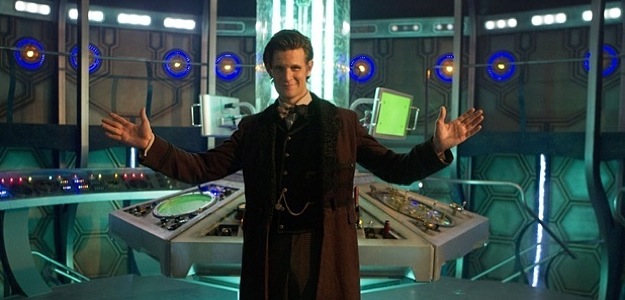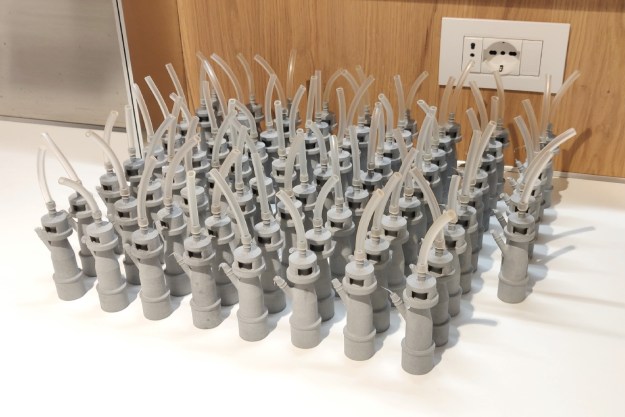 He’s famously traveled throughout time and space for half a century, making new friends and enemies along the way, and introduced television viewers around the world to numerous alien races from the Autons to the Zolfa Thuran (and more familiar names like Daleks, Cybermen, and the Ood). But to celebrate his 50th birthday, BBC has announced that it will be taking the Doctor to a whole new dimension, with a half-century anniversary special episode of “Doctor Who” to be produced in 3D.
He’s famously traveled throughout time and space for half a century, making new friends and enemies along the way, and introduced television viewers around the world to numerous alien races from the Autons to the Zolfa Thuran (and more familiar names like Daleks, Cybermen, and the Ood). But to celebrate his 50th birthday, BBC has announced that it will be taking the Doctor to a whole new dimension, with a half-century anniversary special episode of “Doctor Who” to be produced in 3D.
The special episode was announced on Monday, with BBC’s controller of drama commissioning Ben Stephenson describing the episode as “a nationwide celebration of both ‘Doctor Who’ and the BBC because I think they are so synonymous. We will be doing a big ‘Doctor Who’ special in 3D which is very exciting and feels very innovative.”
The series’ current executive producer and head writer, Stephen Moffat, is a little less humble – saying that it was “about time” the 3D episode came to fruition. “Technology has finally caught up with ‘Doctor Who’ and your television is now bigger on the inside. A whole new dimension of adventure for the Doctor to explore.”
The show will broadcast in 3D on the BBC HD channel, with a “regular” version screening on BBC One (and, likely, BBC America) in November. For those in the U.K. who don’t have access to the HD channel – or a 3D TV, for that matter – that doesn’t mean that they’ll have to miss out; BBC is planning on releasing the 3D version of the special in movie theaters around the country. “We will be doing it on cinema screens as well,” Stephenson said, although details aren’t yet available. “We are working out the logistics of that at the moment … we need to make sure the main BBC One experience remains absolute value for money for the audience.”
Stephenson was equally vague about the content of the special. “There will be lots of aliens and daleks and things like that – or maybe there won’t. There are many different things to take into account and we will also have a Christmas special after that and it all connects. Or maybe it doesn’t,” he said. “There’s lots to work out.”
While this is neither the first time that BBC has made 3D programming – one of its main Christmas 2012 shows, a children’s show titled Mr. Stink, was broadcast in the format – nor the first time a BBC television show has seen a cinematic release, it is the first time the two have been combined in this way. All that remains now is for Moffat to finish writing the episode, and ensure that it lives up to this kind of treatment. Judging by recent efforts, I doubt that’ll be too hard.
Editors' Recommendations
- 3DMakerpro’s Seal is a pocket-sized scanner to make next-gen precision 3D prints
- Need a last-minute Halloween costume? Check out these 3D-printable getups
- The future of making stuff: Inside the evolution of 3D printing with Formlabs
- Father’s Day Gift Idea: These cheap 3D printers are on sale for less than $300
- 3D printing lets hospitals make ventilator substitutes with common equipment


